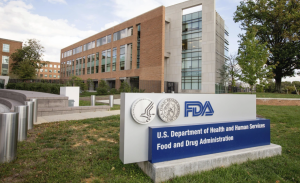The FDA is cracking down on labeling for drug products that will require companies to reevaluate and make changes to new and existing products if they wish to stay in compliance. To ensure companies can continue production without slowdowns, it is important to understand what changes are being implemented and how they will affect your products.
Greater Transparency in NDA and ANDA Labeling

In April 2024, the FDA released a draft guidance aimed at improving transparency in drug labeling, particularly for New Drug Applications (NDAs) and Abbreviated New Drug Applications (ANDAs), which cover generic drugs. Generic drug labeling must contain information to show that the proposed labeling is the same as that for the Reference Listed Drug (RLD), with certain permissible differences. Under 21 CFR 314.50, an NDA must contain a list of all components used in the manufacture of the drug product. However, historically, there have been several instances whereby the NDA did not disclose all of its ingredients in the labeling, leading to complications in the regulatory approval process for generic versions. This lack of transparency created delays and regulatory hurdles for ANDAs that relied on accurate ingredient information from their RLD.
Moving forward, the FDA is advocating for clearer and more comprehensive ingredient disclosures on NDA and ANDA labels. For example, labeling for non-oral drug products may need to contain the names of all inactive ingredients with limited exceptions. This shift is intended to eliminate unnecessary review delays and improve the efficiency of ANDA approvals. While the exact compliance strategies remain unclear, the draft guidance from April 2024 is expected to shape regulatory expectations well into 2025 and beyond once the guidance becomes finalized.
This change marks a significant step toward improving the drug approval process. Greater transparency in ingredient listings will not only help generic drug manufacturers but also ensure that healthcare providers and consumers have access to complete information about their medications. The push for increased clarity aligns with broader FDA efforts to enhance drug safety and efficacy.
New Labeling Rules for OTC Drugs
Another critical update in drug labeling comes with the final rule for non-prescription (over-the-counter, or OTC) drugs under the Additional Condition of Nonprescription Use (ACNU) framework. Published in December 2024, this rule introduces new labeling requirements for certain OTC products to enhance consumer safety and regulatory oversight.
Under the ACNU framework, some OTC drugs will require additional steps before consumers can access them. These measures may include visiting the manufacturer’s website or completing a brief manufacture’s to determine whether the product is suitable for individual use. This regulatory approach seeks to strike a balance between expanding consumer access to safe and effective nonprescription medications while ensuring that people use them appropriately.
The implementation of this rule could significantly impact both consumers and pharmaceutical companies. On one hand, it enhances safety measures by ensuring that individuals receive proper guidance before using certain OTC drugs. On the other hand, companies will need to update their packaging, labeling and digital platforms to comply with the new requirements. Consumers may also need to adapt to these changes by engaging with manufacturers’ resources before purchasing certain OTC products. The final rule is intended to increase options for consumer access to appropriate, safe, and effective drug products, which could improve public health.
What to Expect
These labeling and transparency initiatives will likely play a major role in shaping the pharmaceutical landscape in the future. The FDA’s push for improved ingredient disclosure in NDAs and ANDAs is expected to streamline generic drug approvals and foster greater trust in drug labeling. Meanwhile, the ACNU framework will redefine how consumers interact with select OTC medications, prioritizing informed decision-making and responsible use.
Stakeholders, including drug manufacturers, healthcare providers, and consumers, should stay informed about these evolving regulations to ensure compliance and safe medication practices. As the FDA continues refining its policies, further clarifications and potential updates may emerge, reinforcing the agency’s commitment to transparency and consumer safety in the pharmaceutical industry.
Preparing for These Changes
For companies looking to stay ahead of these regulatory updates and maintain seamless approvals and production, it is essential to assess current processes and identify gaps in compliance with the new FDA guidelines. Engaging with third-party auditors with relevant expertise can help pinpoint deficiencies and develop a robust implementation strategy, ensuring compliance from the outset.
At RCA, we leverage our extensive network of industry experts, including former FDA consultants and leading auditors, to provide comprehensive support. Whether identifying and addressing compliance gaps or designing entirely new processes for emerging products, our team ensures a seamless transition to meet evolving regulatory expectations. Let us help you identify any gaps and help you form a clear strategy that will keep your drug labels in compliance today.
To begin the Regulatory Compliance Associates scoping process today, please enter your information in the blue form below and click the submit button at the bottom of the webpage. You may also email us at [email protected].




 The FDA (Food and Drug Administration) conducts inspections to ensure that companies manufacture high quality products and comply with federal regulations regarding the safety, efficacy, quality and labeling of their products. Inspections serve to verify that manufacturing facilities follow Good Manufacturing Practices (GMPs), adhere to safety guidelines, and produce products that meet established standards. The legal authority for inspections is outlined in the Federal Food, Drug, and Cosmetic Act (FD&C Act)
The FDA (Food and Drug Administration) conducts inspections to ensure that companies manufacture high quality products and comply with federal regulations regarding the safety, efficacy, quality and labeling of their products. Inspections serve to verify that manufacturing facilities follow Good Manufacturing Practices (GMPs), adhere to safety guidelines, and produce products that meet established standards. The legal authority for inspections is outlined in the Federal Food, Drug, and Cosmetic Act (FD&C Act)  The FDA has recently issued the
The FDA has recently issued the 